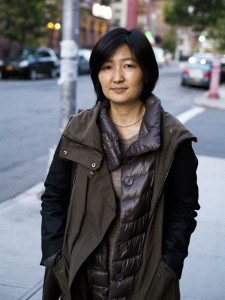I’m out of town this week and part of next, so we’ll be on hiatus for this week and next. Reviews will return the second week of January.
Thanks for reading! A very Happy New Year to everyone.
I’m out of town this week and part of next, so we’ll be on hiatus for this week and next. Reviews will return the second week of January.
Thanks for reading! A very Happy New Year to everyone.
Kyusang Lee described Traces of Life: Seen Through Korean Eyes, 1945-1992 to me as being central to understanding Korean Photography. He felt so strongly about this that he literally chased after me following our interview to give me the book. Published in conjunction with a 2012 exhibit at The Korea Society in New York curated by Chang Jae Lee, the book outlines the post-World War II beginnings of a nascent autonomous Korean photographic tradition.
Photography first came to Korea through missionaries and other Western travelers and was later used by the Japanese as a tightly controlled political tool during the colonial period in Korea. Photographic representation of Korea and its people before 1945 was thus defined by an external perspective even when created by Koreans. In the politically charged environment of post-liberation Korea, the shift to self-representation by Korean photographers was dramatically felt and marked stylistically by an adoption of “life-realism”. This shift meant that “Koreans could finally see themselves from their own perspective,” according to Sun Il. Continue reading
 On October 26th, Sangyon Joo of Datz Press came by KPB HQ to talk about her experiences as a publisher, curator and photographer. We’d first met during Printed Matter’s Art Book Fair at PS1 when I stopped by the Datz Press booth. This conversation has been edited for length and clarity.
On October 26th, Sangyon Joo of Datz Press came by KPB HQ to talk about her experiences as a publisher, curator and photographer. We’d first met during Printed Matter’s Art Book Fair at PS1 when I stopped by the Datz Press booth. This conversation has been edited for length and clarity.
MNM: Sangyon, thank you so much for making the time to come out to Brooklyn for this conversation. I am delighted to have you here and looking forward to the conversation.
SYJ: This is the fifth issue in our magazine, Gitz. Our conversation reminds me of somebody we profiled in the magazine, a Korean book collector who collects books about Korea. The books he collects were made by Western people who came to Korea in the early years, a hundred years ago. They saw the Korean people and culture and archived their observations in books. They collected and spread exotic cultures in their home countries. He goes to Western bookstores to collect these books about Korea and brings them back to Korea to show to us. It says a lot to me about how books work and how books can go around sharing culture. I think it is a very interesting job mixing Western views of Korea—we can see ourselves through their eyes and can find ourselves through their eyes. Something really great can be done with books.
Continue reading